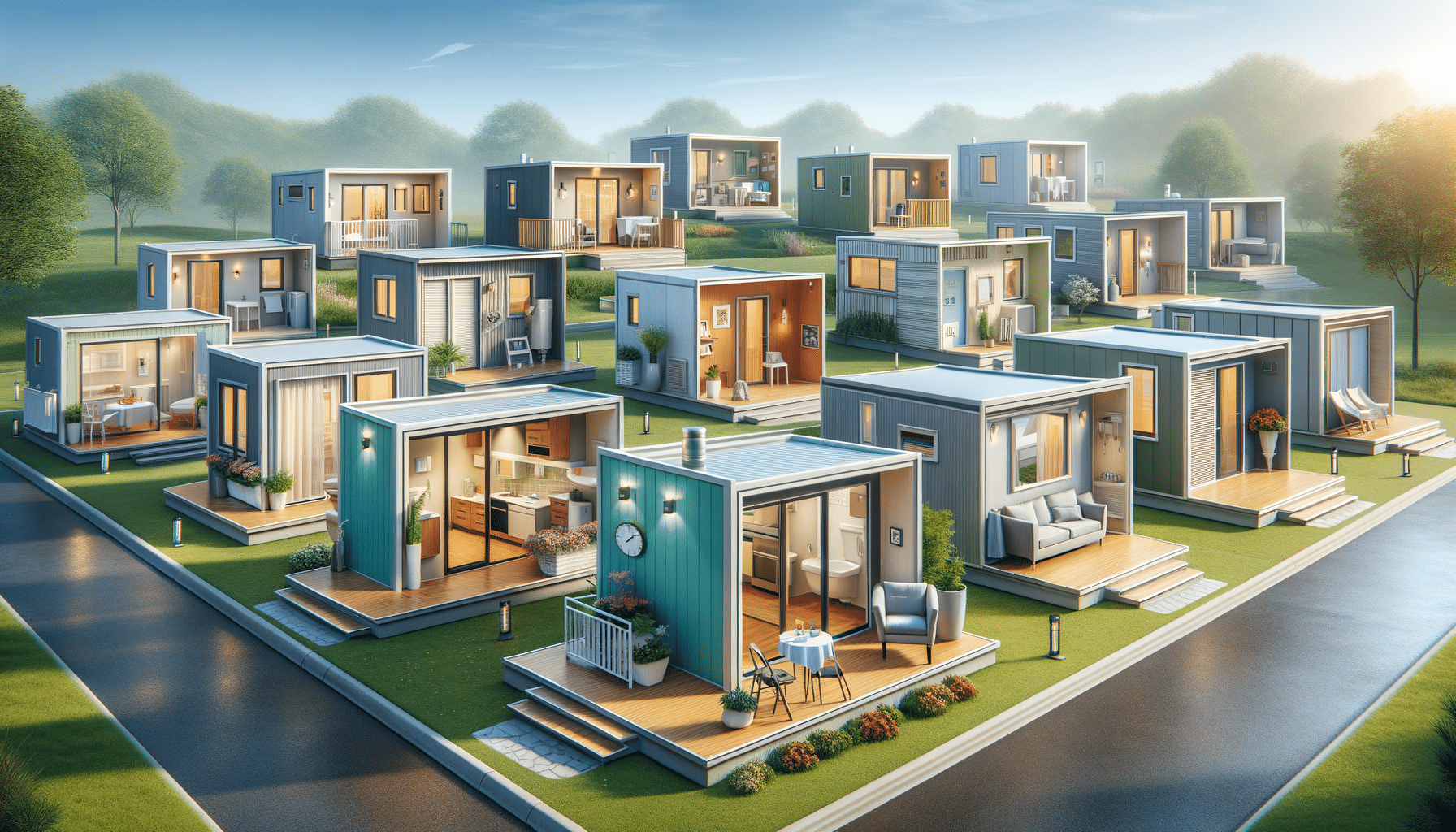
Modular Homes: Tailored Living Solutions for Seniors – Navigating Through Efficient Space Options
Understanding Modular Homes and Their Appeal to Seniors
Modular homes have emerged as a revolutionary solution in the housing market, particularly appealing to the elderly demographic. These homes are prefabricated structures that are manufactured in sections and then transported to the site for assembly. The versatility of modular homes lies in their ability to be customized to meet specific needs, making them an ideal choice for seniors who require a living space that is both functional and adaptable.
One of the primary reasons modular homes are favored by seniors is their cost-effectiveness. Traditional homes can be expensive to build and maintain, whereas modular homes offer a more affordable alternative without compromising on quality. Furthermore, the construction process is significantly faster, reducing the stress and inconvenience often associated with building a new home.
Another advantage is the flexibility in design. Modular homes can be tailored to include features such as wider doorways, lower countertops, and step-free entrances, ensuring that they are accessible and comfortable for those with mobility challenges. With the aging population on the rise, the demand for such adaptable housing solutions is expected to grow, making modular homes a forward-thinking choice for senior living.
Efficient Space Utilization in Modular Homes
Space utilization is a critical factor in the design of modular homes for the elderly. The goal is to maximize functionality while maintaining a comfortable and aesthetically pleasing environment. Modular homes achieve this through innovative design and strategic planning.
Open floor plans are a popular choice, as they create a sense of spaciousness and allow for easy movement throughout the home. This is particularly important for seniors who may use mobility aids such as walkers or wheelchairs. Additionally, modular homes can be designed with multi-functional spaces, such as a living room that doubles as a guest room, or a kitchen with built-in storage solutions to minimize clutter.
Effective space utilization also involves the incorporation of smart technology. Features such as adjustable lighting, automated temperature control, and voice-activated devices can enhance the living experience and promote independence for seniors. By integrating these technologies, modular homes can offer a modern and convenient lifestyle that caters to the unique needs of the elderly.
Comparing Modular Homes with Traditional Housing Options
When considering housing options for seniors, it’s important to weigh the benefits of modular homes against traditional housing. Traditional homes, while offering a sense of permanence and stability, often come with higher costs and longer construction times. In contrast, modular homes provide a more economical and expedient solution.
Modular homes are built in a controlled factory environment, which reduces the risk of weather-related delays and ensures consistent quality. This is a stark contrast to traditional homes, where construction can be affected by external factors, leading to potential delays and increased costs.
Another key difference is the customization potential. Modular homes can be easily modified to suit individual preferences and needs, whereas traditional homes may require extensive renovations to achieve the same level of personalization. This flexibility makes modular homes an attractive option for seniors who desire a home that is tailored to their lifestyle and capabilities.
The Role of Sustainability in Modular Home Design
Sustainability is an increasingly important consideration in home design, and modular homes are at the forefront of this movement. These homes are often constructed using eco-friendly materials and energy-efficient systems, making them a sustainable choice for environmentally conscious seniors.
Many modular homes are designed to maximize natural light, reducing the need for artificial lighting and lowering energy consumption. Additionally, features such as solar panels, rainwater harvesting systems, and high-efficiency insulation contribute to a reduced environmental footprint.
Choosing a sustainable modular home not only benefits the environment but also offers long-term cost savings. Energy-efficient designs can significantly reduce utility bills, providing financial relief for seniors on a fixed income. By prioritizing sustainability, modular homes offer a responsible and economical housing solution for the elderly.
Personalizing Modular Homes for Senior Comfort
One of the most appealing aspects of modular homes is the ability to personalize them to meet the specific needs and preferences of the occupant. For seniors, this means creating a living space that is both comfortable and supportive of their lifestyle.
Personalization can include a range of modifications, from choosing specific finishes and fixtures to incorporating assistive technologies. For example, installing grab bars in bathrooms, non-slip flooring, and adjustable countertops can significantly enhance safety and convenience for seniors.
Additionally, modular homes can be designed to accommodate future needs. As seniors age, their requirements may change, and modular homes can be easily adapted to include features such as in-home care facilities or additional living spaces for caregivers. This foresight ensures that seniors can continue to live independently and comfortably in their own homes for as long as possible.

